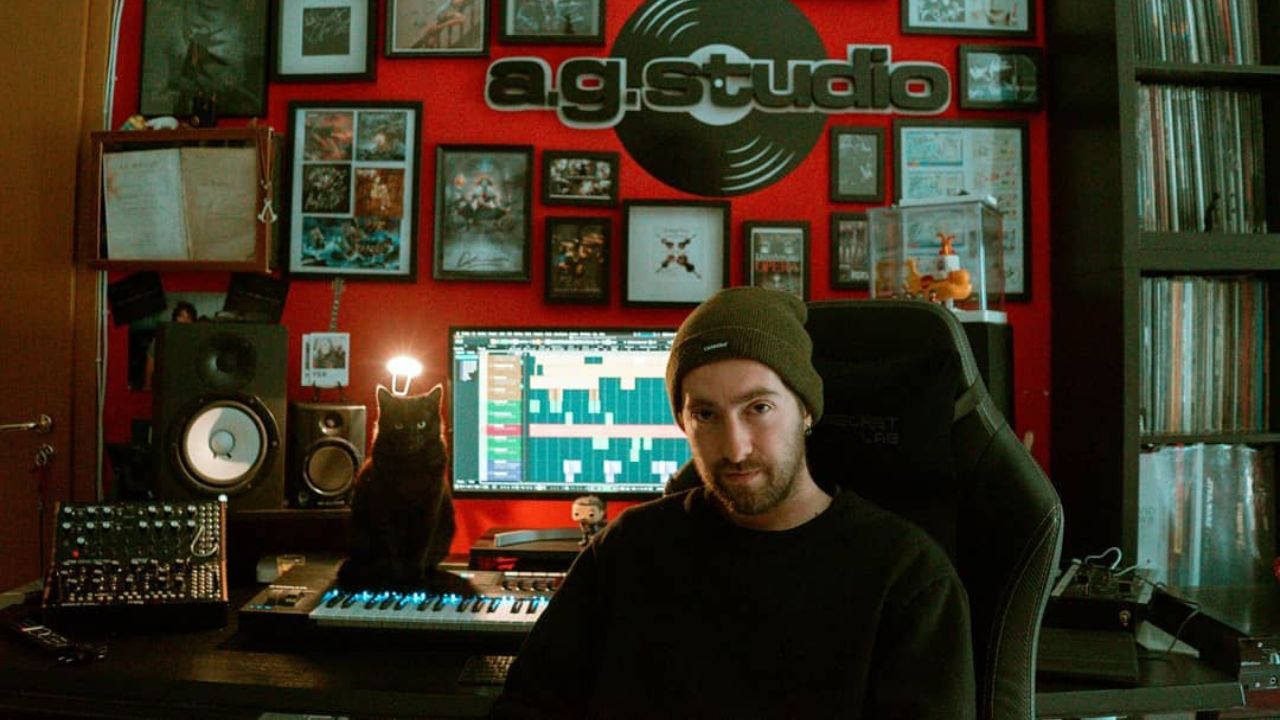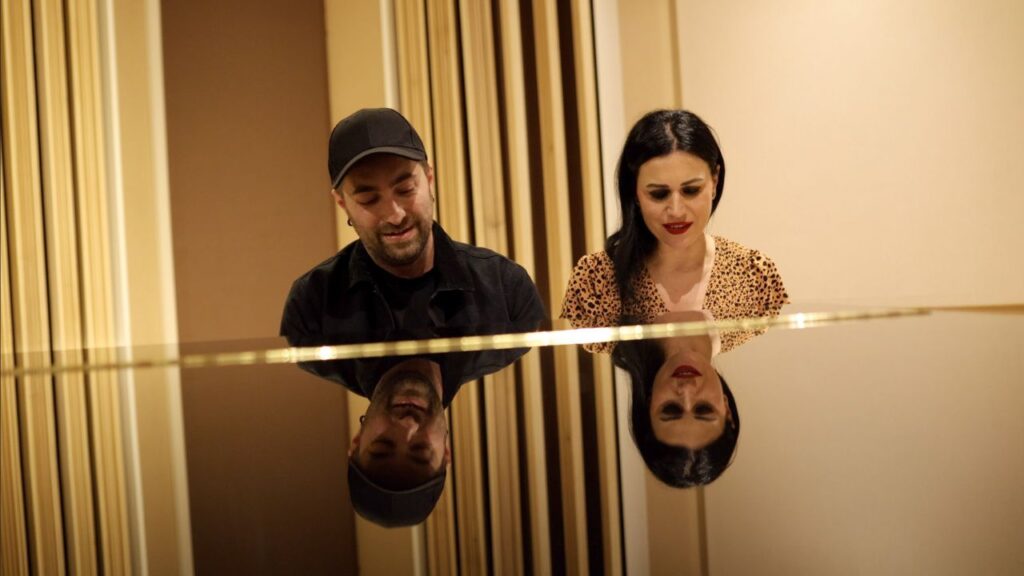Available from August 30th on PC, PS5, PS4, Xbox Series Daymare: 1994 Sandcastle it is the latest work of the Italian developer Invader Studio. A survival horror, sequel to Daymare 1998, characterized by an extremely refined and immersive soundtrack.
Impressed by the work on the music, we had a chat with whoever composed and produced that soundtrack, i.e. Alessandro Galdieriprecisely on the occasion of the release of the OST on all digital stores.
For those who don’t know him, Alessandro Galdieri is an Italian producer, musician and composer, also known for being the male half of the duo In The Loopwith Valentina Schiavo. Also, if you have recently been to any concerts of Giorgieness o Chiara Galiazzoyou’ve probably seen him on guitar.
After having signed the soundtrack of the first Daymare 1998, released in 2019, Galdieri returned to the site of the crime, offering us a series of absolutely majestic soundscapes in the sequel Daymare: 1994 Sandcastle. The original soundtrack also includes a song called Loneliness, enhanced by the powerful voice of Cristina Scabbia by Lacuna Coil.
This was Alessandro’s musical identity card. He tells us everything else.
The interview with Alessandro Galdieri
The collaboration with Invader Studios was born in 2019, when you composed the soundtrack for the first chapter Daymare 1998, can you tell us about it?
“In reality it all started by chance! In 2018, with In The Loop, we participated in X-Factor, and shortly after the airing of one of the episodes I found a message on my cell phone from Alessandro De Bianchi, one of the founders of Invader Studios. He was fascinated by my way of making electronics, proposing to collaborate on the soundtrack of Daymare 1998, which would be released the following year. I accepted immediately, also because I have always been a fan of video games. Right now, right behind me, I have a host of consoles collected over the years.”
What was it like working on something so different from the canonical song form?
“The form is certainly different, but the creative process is not that dissimilar. Ultimately it’s about expressing yourself, about bringing your writing to others. Doing it for a game, then, is incredibly stimulating, because I believe that video games are a 360-degree art form, hands down one of the most interesting multimedia vehicles of this century. In a video game there is the acting, dubbing, graphic design, cinematographic and musical aspect. The video game is pure art.”
Speaking of the creative process: how does the soundtrack for a video game like Daymare: 1994 Sandcastle come about? Have you played it before or did you just have generic references?
“I started from the script, so I had to imagine a lot of the visual aspect. Let’s say I read a lot and saw little. However, being a horror-tinged game, I started with fairly clear ideas about the mood to convey. For the cutscenes I had the opportunity to see something, mainly videos in which real actors, in motion capture, simulated the movements that the characters then make in the game, but for the gameplay it was definitely a more imaginative work, especially for the bosses- fight, where there is a different compositional scheme”.
After all, the music in a video game is what dictates the rhythm, especially in fight scenes.
“Absolutely. In boss fights, for example, it was important to find the right pattern, given that they are loops that repeat with different intensity. The cutscenes, on the other hand, are exactly the opposite: there the work is almost cinematic, given that there is a precise running time to respect. Consequently, the composition must have a structure closer to the classic intro, climax and outro scheme. An even different story however for the soundtrack of the gameplay, where the approach is more ambient.”
You rightly speak of a cinematic approach, in this sense what were your references?
“With Alessandro De Bianchi we said to ourselves ‘let’s take back that typical sci-fi sound of the 90s’. That sound a la X-Files so to speak, trying to restore that sense of retrofuturism that permeated our adolescence”.
There is also a predominance of very dark synths, which immediately made me think of the sound of series like Stranger Things. As Manuel Agnelli sang “you can’t leave the 80s alive”?
“Yes, the 80s never went away! The reference to that world is there, inevitably and even unconsciously, more than anything else in the electronic aspect. The sound imagery of the 80s is pervaded by analog synths such as the Prophet. For the Daymare 1994 soundtrack I used a lot of analog synthesizers, including the Prophet itself, and it was a lot of fun playing with the knobs.”
In addition to the electronic aspect there is also a lot of orchestra, can you tell me about it?
“The interesting aspect was finding the right balance between two very different worlds which, never more than in today’s productions, are so close. Cinema, TV series and video games are getting us more and more used to this fusion.
But I heard some electric guitar. You can’t resist the call of the six strings?
“I had to resist though. In the first Daymare I left more space to the purely musical aspect, and therefore there were also many more guitars. In this I preferred modular synths and large reverbs. I absolutely wanted to best convey the sense of restlessness of the story”
Guitars that are also absent in Loneliness, the song with Cristina Scabbia. Where everyone would have turned on the distortion you placed the handle, why?
“It would have been way too formulaic. The song has a strong orchestral component, adding guitars would have brought it closer to symphonic metal, and we would have distanced ourselves from the mood of the game. Let’s say that, as many musicians say, we need to learn to remove and not add”
Less is more! And for the voice? Loneliness has a beautiful, challenging melody, embellished by Cristina Scabbia’s disarming vocal expressiveness. When you composed it, did you already know that she would sing it?
“No, initially I just composed the song, recording a piano and voice demo with invented lyrics in broken English. Only afterwards did I ask myself who could have played her best. I asked myself: ‘which Italian singer, passionate about video games, could enhance a melody so rich in nuances?’. I didn’t have to think about it too much, Cristina Scabbia immediately came to mind. I proposed it to the Invader guys and it happened. After less than 24 hours I was talking on WhatsApp with Cristina, who was enthusiastic about the song”
Here Alessandro gives me a spoiler that I can’t tell you, so you’ll have to play Daymare: 1994 to find the question. But I’ll leave you the answer, maybe you can reconstruct everything.
“There are many references in this soundtrack, some even to events in the first game. I’m a fan of contextualized music, I love connecting music to a character or story. In Italy we have a great school from this point of view. I would like to mention Armando Trovajoli, or even Goblin: when you think of Profondo Rosso or Suspiria you immediately have both a sound and visual appeal”
Returning for a moment to working in the studio with Cristina Scabbia, tell me what it was like to work with such a vocally gifted singer.
“It was wonderful. And it’s not just a technical question. It was literally emotional, for everyone. Cristina identified herself not only with the song, but with the entire project”
The original soundtrack of Daymare: 1994 Sandcastle, composed and produced by Alessandro Galdieri, is available from today on all digital stores. The game will be available from August 30th on PC (via Steam), PlayStation 5, PlayStation 4, Xbox Series X|S and Xbox One.














Leave a Reply
View Comments